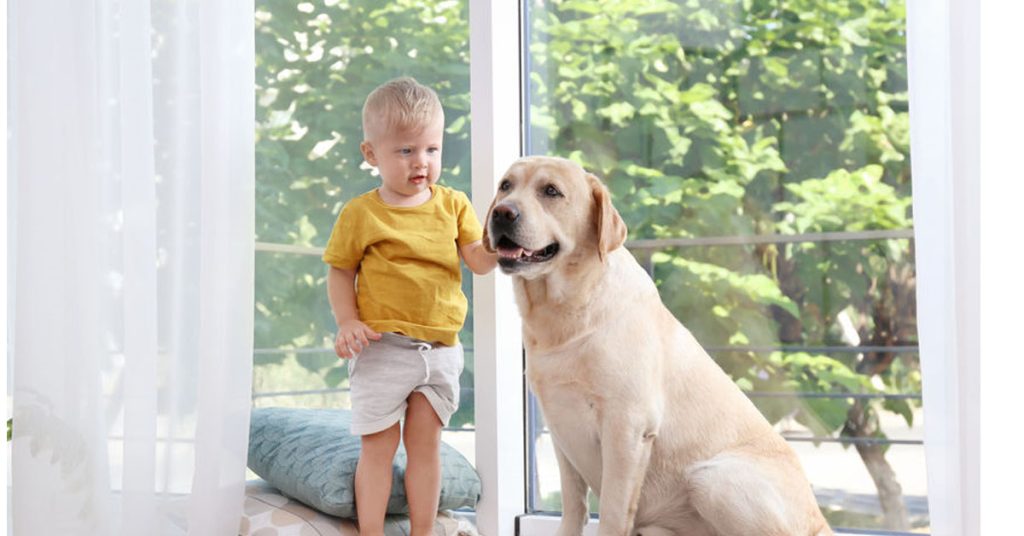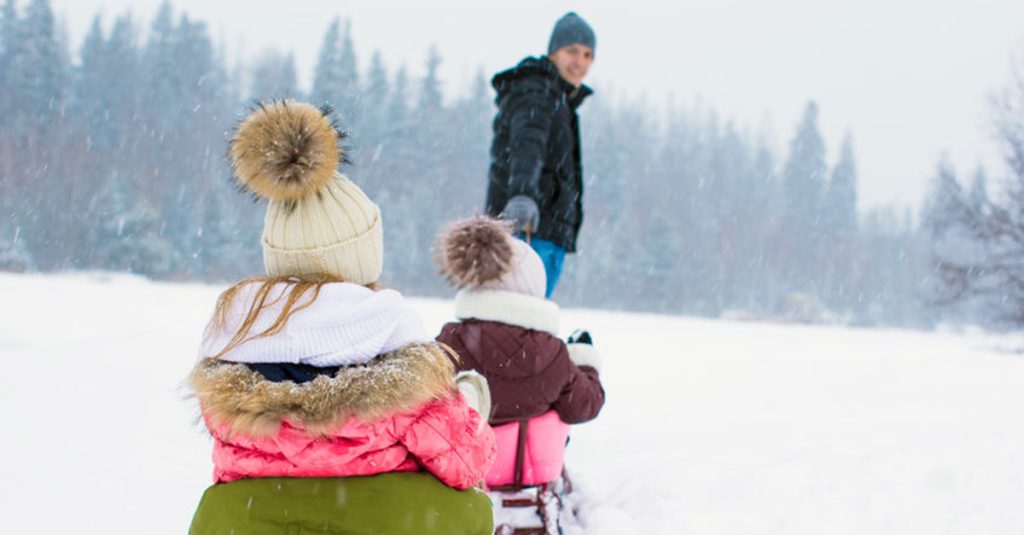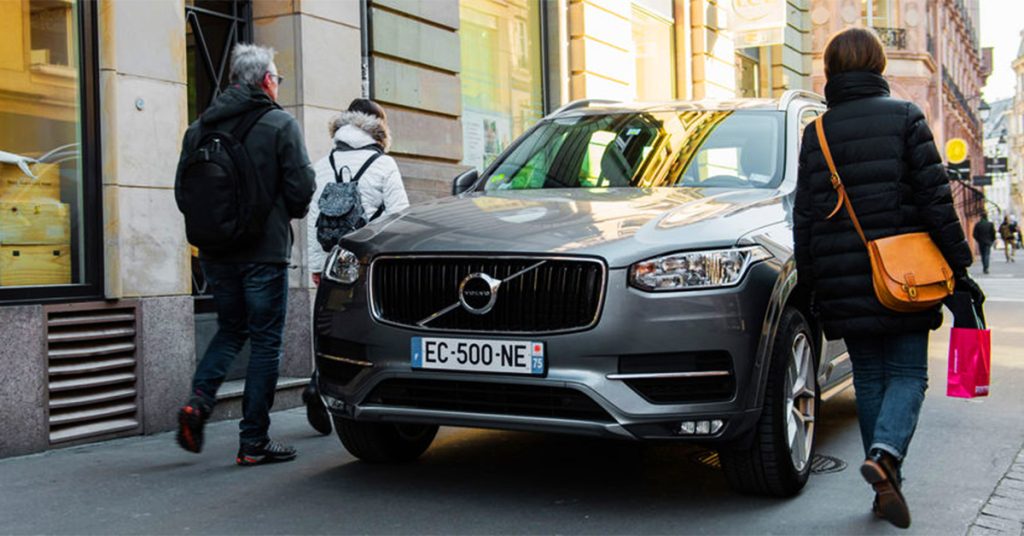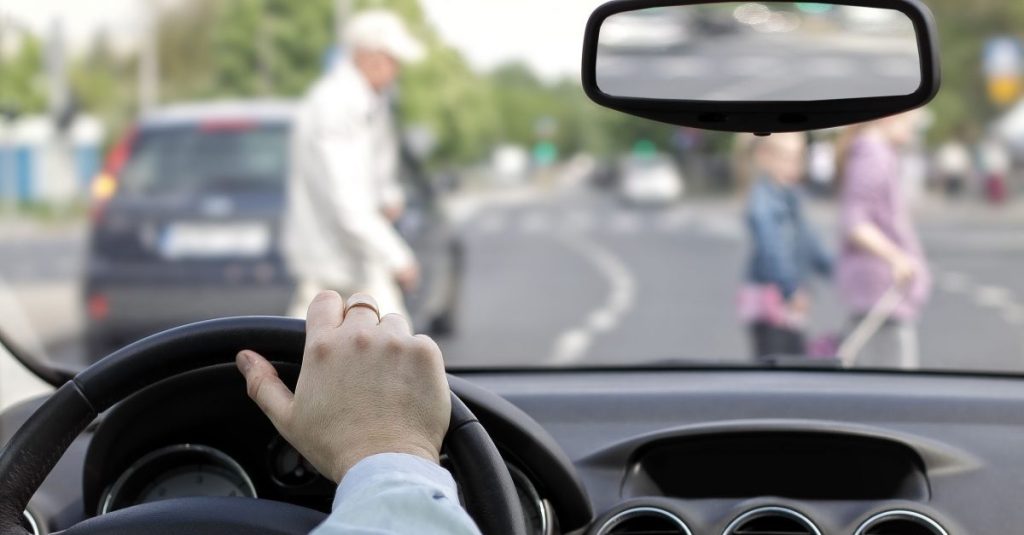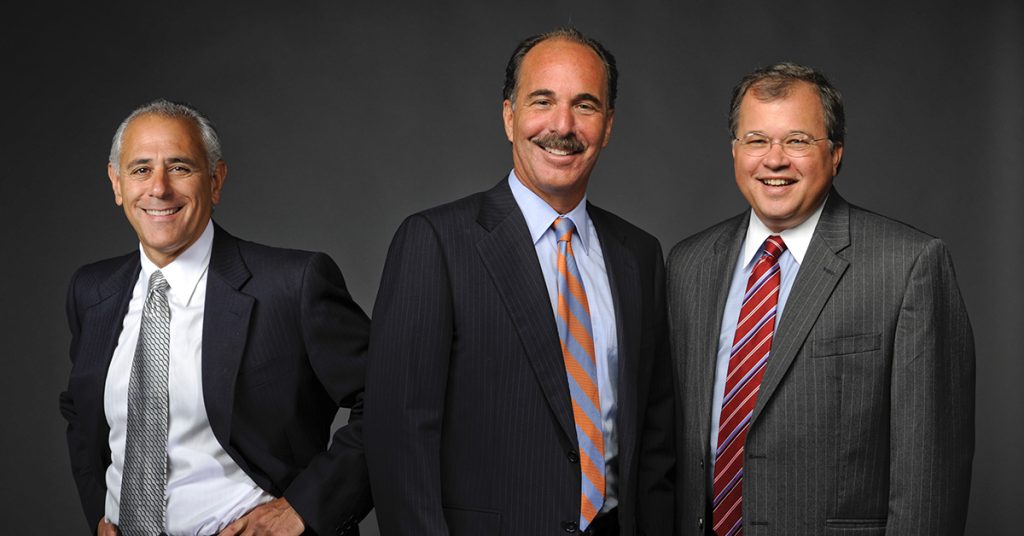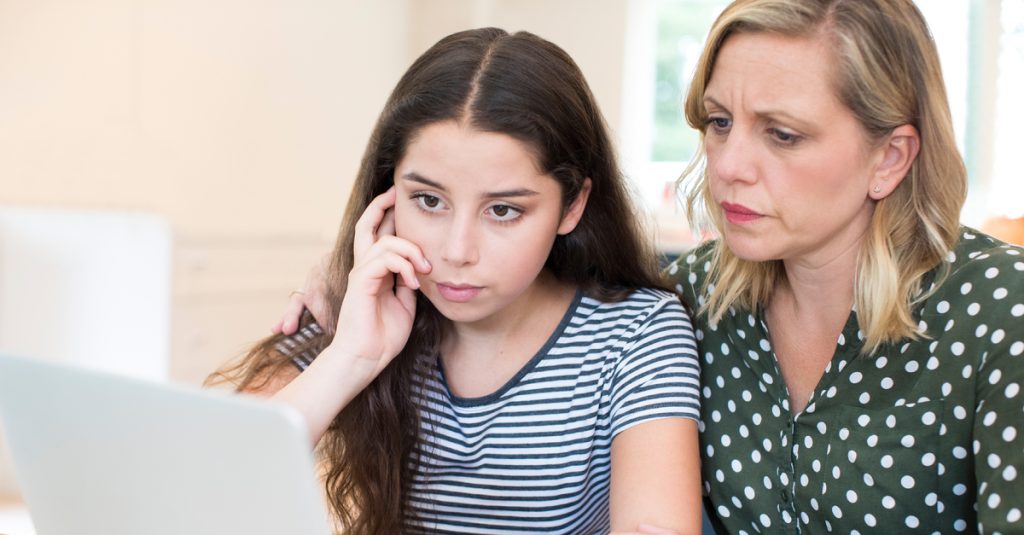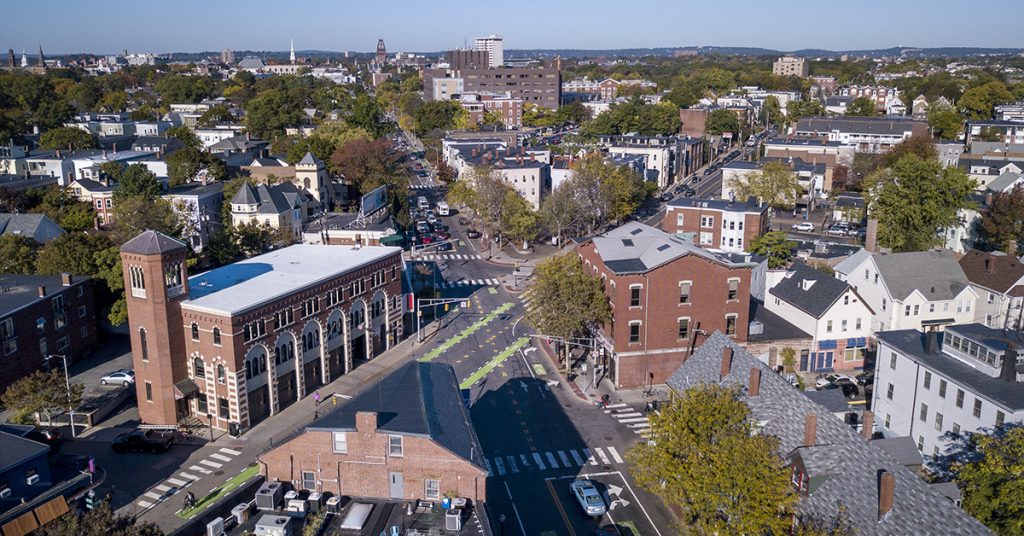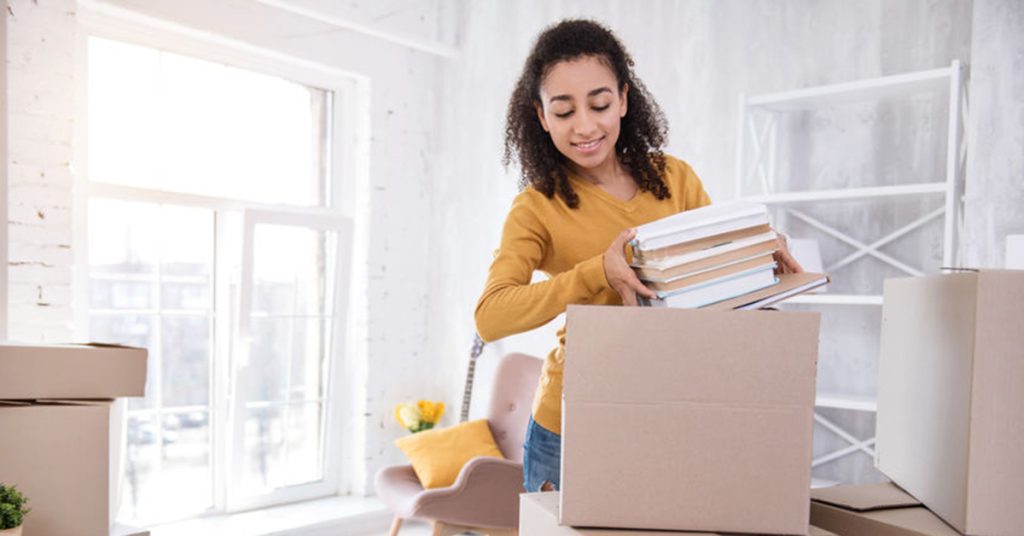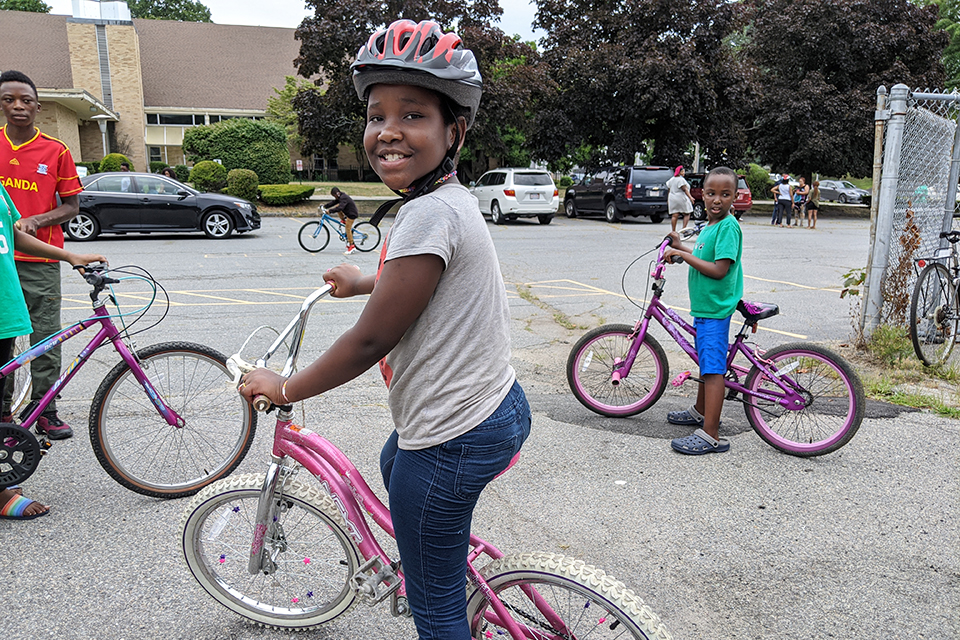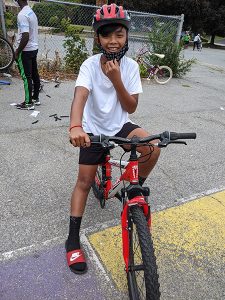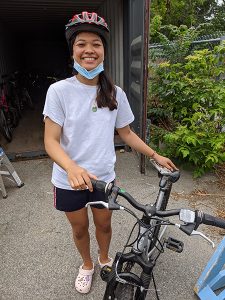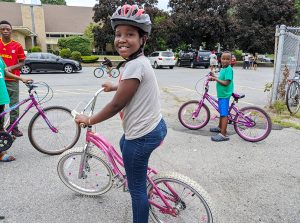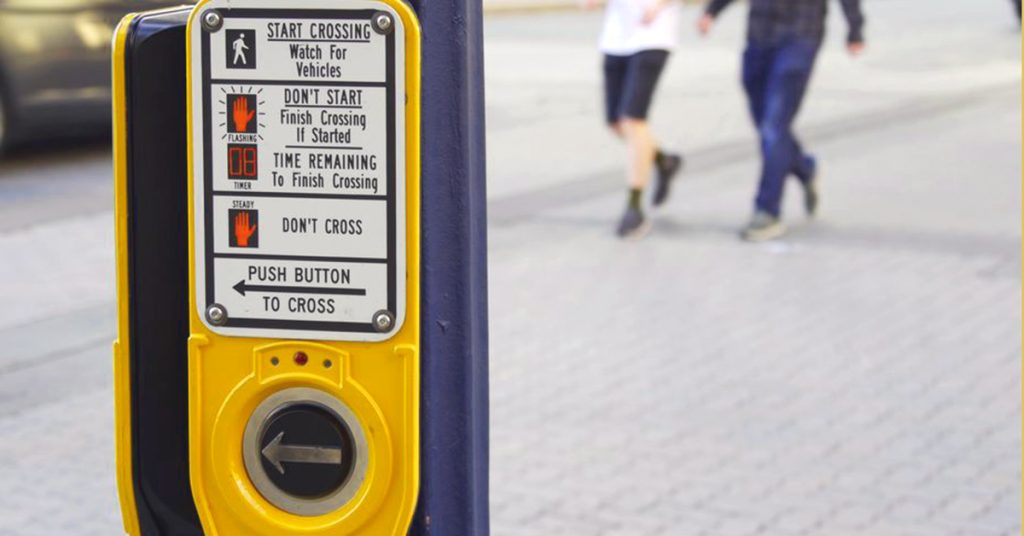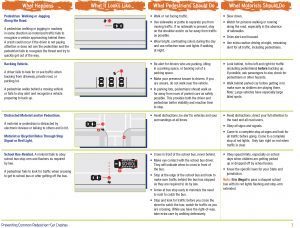Personal Injury
Children Have Suffered More Dog Bite Injuries During Pandemic
 Research published in the Journal of Pediatrics reports a 3x increase in children seeking care for dog bite injuries at a Colorado hospital during the pandemic. The researchers noted that this trend likely spread beyond this one hospital.
Research published in the Journal of Pediatrics reports a 3x increase in children seeking care for dog bite injuries at a Colorado hospital during the pandemic. The researchers noted that this trend likely spread beyond this one hospital.
In January 2019, the hospital reported 3 dog bite injuries per 1,000 ER visits. Over April and May of 2019, the rate increased. In July 2019, the rate reached a peak of 7 dog bite injuries per 1,000 ER visits.
Fast forward to January 2020, which also saw 3 dog bite injuries per 1,000 ER visits – same as the previous January. By May 2020, there were about 13 dog bite injuries per 1,000 ER visits. Dog bite injuries continued to rise after Colorado lifted its stay-at-home order that April.
A New York Times article attributed the rise in part to so-called pandemic puppies. Owners may not have planned to bring these pets home during 2020. In some cases, these were complete impulse decisions. Who expected to be home this long? Because of that, owners may not have been prepared to train and care for puppies. There was also decreased access to dog trainers.
Children had increased exposure to puppies during those shelter in place days. Children usually have more contact with dogs when finish school for the summer. Here, children began spending more time with dogs in March of 2020. As children stayed home, parents struggled to balance home-schooling and their own jobs and may not have been supervising children near dogs as closely.
Dog bites are traumatic and can be life-threatening for young children. At Breakstone, White & Gluck, our personal injury lawyers know no one completely realizes how vicious a dog can be when it attacks. Training a dog is one step to help prevent a dog attack. Just as important is keeping a dog on a leash at all times. You never know what may trigger your dog to bite or attack. Even well behaved and calm dogs have unexpectedly attacked young children. One incident can be all it takes to change a child’s life forever.
A 2020 study shows just how important it is for parents or relatives to factor in a child’s age when bringing home a dog. Children under 11 were three times more likely than older children to be admitted to the hospital, according to the study, which was authored by a physician at UMass Memorial Medical School in Worcester. Younger children were also more likely to be admitted to the hospital.
Children age 1 through 10 were more likely to suffer open wounds to the head, neck and lower body. The study reviewed more than 6,300 hospital admissions from the Kids’ Inpatient Database during 2006, 2009 and 2012. One third of the patients had injuries so severe they required surgery.
Tips to Keep a Safe Dog After COVID-19
If you have a dog, we suggest the following tips to protect your children, family and neighbors from a dog bite injury:
- Always keep your dog leashed and under control when you are outside your home.
- Continue to limit guests to your home as COVID-19 restrictions get lifted.
- Secure your dog when guests come over.
- Do not leave your dog alone with your children or other children.
- Be aware that younger children have a higher likelihood of injury to their neck or head.
- Also be aware that many children suffer dog bites from their family pet or from pets they know well.
- Train your dog and socialize them.
- Consult your veterinarian or a dog trainer.
- Walk your dog outside on a leash a few times a day so it can get some exercise.
- Give your dog some personal attention each day.
- Recognize that dogs may be more likely to bite when they are gathering or protecting belongings. This is called “resource guarding.”
- Build a fence.
If you brought home a pandemic puppy, you have some planning to do since your dog has limited exposure to other people. Keep your dog on a leash when outside or when you have guests over. With all dogs, it is critical to ease your dog back into the social experience of being around guests at your home, including close friends and extended family members.
Building a fence in your backyard may also be a good spring project. A fence keeps your dog out of sight from your neighbors and their children. When children see a dog, they are more likely to want to approach and pet it. But as a dog owner, you must remember it’s devastating for a child to suffer a dog bite injury. The law on liability is also strict in Massachusetts. You can be held liable if your dog bites a young child, even if the child went onto your property without permission. The law recognizes that young children may not realize they are stepping toward danger. Your dog doesn’t have to have a history of dog bites or attacks for you to be held liable.
Free Legal Consultation – Boston Dog Bite Attorneys
If you have been injured by a dog or want to learn more about Massachusetts law concerning a dog owner’s responsibilities, visit our website. Each of our partners has more than 30 years of experience representing children and others injured by dog bites and dog attacks. We are here to advise you on your rights for seeking compensation for your child or yourself.
For a free legal consultation, contact our dog bite lawyers at 800-379-1244 or 617-723-7676 or use our contact form.
Tips for Sledding Safely in Massachusetts
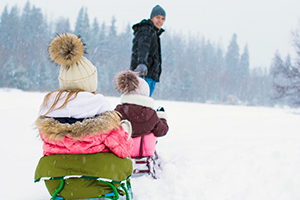 February has delivered perfect sledding weather for Massachusetts families. But before you head out with your children, remember the risk for injuries can rise during outdoor winter activities. Sledding, skating and skiing push our bodies beyond our daily routines as we face the elements of cold weather, snow and ice.
February has delivered perfect sledding weather for Massachusetts families. But before you head out with your children, remember the risk for injuries can rise during outdoor winter activities. Sledding, skating and skiing push our bodies beyond our daily routines as we face the elements of cold weather, snow and ice.
More than 20,000 children are treated for sledding injuries on average each year, according to the National Safety Council. Children can be injured when a sled hits a stationary object, in collisions with other sledders or by flipping or falling off their sled. Sledding accidents such as these can result in broken bones, lacerations, bruises, concussions, head injuries or more serious injuries.
You can protect your children by sledding with them and teaching them safety fundamentals by example. Please read our tips and enjoy a fun and safe sledding experience:
Choose a Safe Sledding Spot
After asking friends for suggestions and searching online, visit a few local sledding hills on your own, without your children. Walk to the top of the sledding area. Check your cell phone service from that point. Sledding hills may look similar, but they are not all equal. Choose a sledding area that is free from trees or rocks that could cause your child injury. Avoid hills that are too close to streets and parking lots.
Look for sledding hills that are snow-covered, not ice-covered.
A walkthrough is particularly useful for parents of young children, who are most vulnerable to the cold. Time your walk and compare this to your child’s regular play time in the snow and their physical capabilities. Think about whether your child can the hill – both the steepness for sledding and walking up the hill.
Sled During The Day. There is less visibility and colder temperatures at night. Your best approach is to sled during the day, when the sun is out.
Sled With Your Children and Supervise.
Sled as a Family. Plan at least one sledding day for your family each year. Besides being a lot of fun, this will create special memories. Sledding is also great way to get some fresh air and exercise for children, which we all need during the winter months.
Sled with Your Child and Their Friends. If your child or teenager wants to sled with friends, go along and watch. Enjoy this time but consider it a parenting assignment. You should really watch them just as you would if they were swimming, with your full attention. Keep your cell phone and a first aid kit within reach.
Sledding Manners. Teach your children to use good manners on the sledding hill. Even if there are no formal rules posted, your children should walk up the hill along the side of the sledding area. When sledding, they should not overcrowd sledders or attempt to run into them on the course. Once they reach the bottom of the hill, children should step off their sled.
—
Dress Warmly
When children are having fun, they may not realize how cold they are or be able to tell you.
Before you sled, make sure your child is wearing a warm winter coat, snow pants, hats, gloves or mittens. Purchase waterproof clothing. Your child should be warm and clothes should fit comfortably.
Take scarves off children before sledding. Also remove strings from clothing and accessories which can cause strangulation or get caught while your child sledding.
—
Safe Sleds and Helmets
Wear a Helmet. Encourage children to be aware of their surroundings and stay in control of their sleds as a good starting point to safety. Parents should also buy young children helmets to protect against head injuries. The Consumer Product Safety Commission advises parents can purchase helmets which meet the ASTM F14922 or Snell N-942 safety standard. If you have questions, we suggest you check the CPSC website which offers guidance on helmet designs for different activities. Another resource is your pediatrician. Ask for their specific suggestion for protecting your child.
Check Your Sleds. If you see sharp edges or cracks, replace your child’s sled.
Purchase a Safe Sled. There are many types of sleds: snow tubes, saucers or toboggans. Read age recommendations and product safety labels. Look for sleds which can be steered or have handles. Specifically look for ropes. While many sleds come with ropes, you can purchase sleds without any to protect young children against strangulation or getting caught on something.
Before you purchase a sled, make sure to check the Consumer Product Safety Commission website for safety recalls. Sleds can be designed with defects, such as faulty brakes on higher end models.
No Make-Shift Sleds. Do not allow your child to make their own sled out of furniture, cardboard or household objects. These products are not designed to carry your children on the snow.
—
Safe Sledding Techniques
Sledding Techniques. Pull your sled up next to theirs and show your children how to ride their sleds safely. Children should generally sit, hold the handles and ride face-forward down the hill. They should not ride stomach down or face first because they could flip or fall off. This can cause serious head or spinal cord injuries.
Riding Alone or Together? It’s a lot of fun to sled with your children or watch them ride together. The key is to find the right sled for the right number of sledders. And of course, the right hill!
Adults can pull young children. But for the most part, children should sled alone as they get older. It is important for them to steer their own sleds and hold on for themselves.
If you want to purchase a sled or tube that carries more than one child or adult, that’s a special experience. Read the manufacturer’s age recommendations, safety warnings and instructions. Look for a few online videos.
Free Legal Consultation – Boston Personal Injury Lawyers
Breakstone, White & Gluck is pleased to share our sledding tips as part of our Project KidSafe campaign. Through Project KidSafe, our goal is to help families protect against child injuries.
Breakstone, White & Gluck is a top-rated Boston personal injury law firm, with more than 100 years combined experience. We represent clients in personal injury cases in Boston and across Massachusetts. If you have been injured by someone else’s negligence, contact us for a free legal consultation at 800-379-1244 or 617-723-7676 or use our contact form.
For Pedestrians, SUVs are Deadlier than Cars
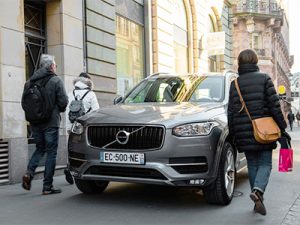
A new IIHS study found SUVs crashes caused more severe injuries to pedestrians than cars.
During the pandemic, pedestrians have outnumbered vehicles on the roads at times. If you look closely, you may see mostly large vehicles left behind, including commercial trucks, package delivery vans and SUVs.
Today, our Boston personal injury lawyers are writing about SUVs and pedestrians. Amid the pandemic, an important study was published by the Insurance Institute for Highway Safety (IIHS), finding SUVs (or sports utility vehicles) cause more serious pedestrian injuries than cars. Researchers concluded automakers need to make design changes to protect pedestrians from increased fatalities.
Highlights from the 2020 study and report:
Drop in overall crashes. Overall, motor vehicle accident fatalities have dropped from more than 50,000 in 1980 to 36,560 in 2018.
Rise in pedestrian crashes. Meanwhile, one in five traffic crashes is now a pedestrian fatality. Pedestrians are more at risk now. The number of pedestrians hit by all vehicles rose a dramatic 53 percent from 2009 to 2018.
Study data. The study reviewed a sample of 79 crashes in Michigan, finding that SUVs caused more serious injuries to pedestrians than cars.
Speed. Below 20 mph, there was not a significant difference in the injuries caused by SUVs and cars.
More danger at higher speeds. When SUVs traveled 20 to 39 mph, 3 out of 10 SUV crashes ended in a pedestrian death. In comparison, 5 out of 22 cars caused a pedestrian fatality.
Over 40 mph was most deadly. At 40 mph, all three SUV crashes resulted in pedestrian fatalities. This is 100 percent compared to 54 percent of cars (7 out of 13).
Previous Research
The IIHS has led several studies on SUVs and the dangers to pedestrians. One past study found that as pedestrian accidents overall have increased, many involve cars, but there was an 81 percent increase in SUVs causing fatal pedestrian accidents between 2009 and 2016.
There are more SUVs on the roads than ever, making it important to address the safety hazards to pedestrians. SUVs first outsold sedans in 2015, according to The New York Times. They continue to be the vehicle of choice for many Americans. In fact, SUVs accounted for up to 47.4 percent of all U.S. auto sales, according to an analyst quoted by the newspaper.
SUV Designs Are Now Being Made Safer for Drivers
What is notable about SUVs is manufacturers have already spent years adopting more “carlike designs” to protect SUV vehicle occupants. Manufacturers have lowered SUV bumpers and other features to align better with cars. The danger to pedestrians has not been addressed the same way.
According to the IIHS, SUVs can endanger pedestrians because of the overall shape of their front end. On many SUVs, the front end is solid and can have a double impact, striking the pedestrian at the pelvis or chest, just after the bumper hits the person’s lower body.
The IIHS now plans to look into the types of SUVs which caused injury in the Michigan study. Meanwhile, in Europe, manufacturers have already started to make use of safety features, such as pedestrian airbags.
A Note for SUV Drivers
Many of us own SUVs. If you purchase one in the future, be aware of the ongoing safety research and read about the specific features on the model you wish to purchase. You may have bought one 10 years ago and find this year’s model is not right for your family and where you live and work.
We suggest you check in with the IIHS website. Other organizations such as Consumer Reports may also offer safety insights.
Consider Your Driving Routine. You want to back your SUV into your driveway as much as possible. This way you have a full view of traffic, cyclists and pedestrians when you leave. To do this safely, you will need a good backup camera. You may also need to make other enhancements to your property as well.
Your ability to back up safely is critical. Many SUV crashes happen as drivers back up and hit a pedestrian or a child playing.
Review Features. Read consumer ratings and reviews on the SUV you want to buy. Vehicles made after 2018 are required to come with backup cameras. Do not assume all backup cameras are equal. Read up on consumer ratings and reviews and test drive your SUV before finalizing the purchase.
Buying Used SUVs. Make sure to properly equip older SUVs with backup cameras and other safety gear.
Free Legal Consultation – Boston Pedestrian Accident Attorneys
At Breakstone, White & Gluck, our pedestrian accident lawyers offer a free legal consultation to determine whether you have a potential claim for your injury. Recognized by Top 100 New England Super Lawyers, we provide our clients with the highest quality representation and specialize in the areas of car accidents and pedestrian accidents, including SUV crashes resulting in serious injury.
If you have been injured, learn your legal rights. For a free legal consultation, contact our attorneys at 800-379-1244 or 617-723-7676 or use our contact form.
Tips to Protect Older Pedestrians From Vehicle Crashes During the Cold and Dark Winter in Massachusetts
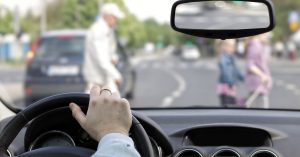 It is a fact: pedestrians age 65 and older face an increased risk for being injured by a car accident or truck crash. According to the Centers for Disease Control and Prevention (CDC), pedestrians of this age accounted for 1 in 5 pedestrian deaths in the U.S. They also suffered 1 in 10 percent of all injuries.
It is a fact: pedestrians age 65 and older face an increased risk for being injured by a car accident or truck crash. According to the Centers for Disease Control and Prevention (CDC), pedestrians of this age accounted for 1 in 5 pedestrian deaths in the U.S. They also suffered 1 in 10 percent of all injuries.
November, December and January are among the darkest months of the year in Massachusetts. At Breakstone, White & Gluck, our lawyers caution all pedestrians take steps to protect themselves. Start before you leave home. One of the most effective steps you can take is to wear a neon colored vest, jacket or other accessories so drivers can see you.
Safety Tips for Older Pedestrians
Arrange for a Ride. During the winter months, ask a friend or family member to give you a ride to the store and help you with other errands. If you do not have someone, call your local town or city hall to speak to their Council on Aging, which may be able to help arrange you a ride. You can go back to walking in the Spring when there is better visibility.
Use Crosswalks. In Massachusetts, pedestrians have the right of way when walking across the street in a crosswalk which has a “Walk” signal or green light.
Do Not Cross the Street Alone. Look for areas where there is a crossing guard if you can. Also look for areas where there are other pedestrians crossing. Do an honest evaluation; if you are walking much slower than other pedestrians, you should only cross when there is a crossing guard or accept a ride.
Avoid Complicated Intersections. Rather than walking through complex intersections, either accept a ride or change your route for the winter months. Also stay clear of wide intersections or roads with traffic passing in both directions.
Be Mindful of Traffic Conditions. If you walk, do so during daylight hours and when traffic is lightest. This is not just advice for crossing the street. Keep this in mind when you are walking through parking lots, where there is a high risk for pedestrian accidents at night.
Find Another Way to Walk For Exercise. Many of us – young and older – like to incorporate some walking for exercise into our daily routines of work and errands. If you miss walking, find a way to walk off the street. Due to COVID-19 restrictions, it is not safe to work out at a health club or gym. You may have to explore other options for exercise this year, such as hiking or even just walking on a lawn. Again, we encourage you to ask friends, family members and others in your community for suggestions.
Safety Reminders for Drivers
Use Reasonable Care and Travel Slowly. Massachusetts drivers have a responsibility to use reasonable care when driving. During the winter months, this means watching for pedestrians at all times, including when you get in your car and when you park. This is the time to utilize your vehicle’s back-up camera. Also watch when you exit your vehicle so you avoid dooring a pedestrian or a cyclist.
Travel Slowly. You cannot control all traffic conditions. But you can control your speed. By traveling slowly, even under the speed limit in residential neighborhoods, you have a greater ability to stop for pedestrians and avoid a pedestrian crash. This is important because older pedestrians are likely to take more time to cross the street. Many pedestrian car crashes occur because a driver misjudged the pedestrian’s speed.
Approach Familiar Places With Caution, Too. Take care even when driving near familiar places, such as a friend’s home, the pizza place down the street or a nearby grocery store. At night, there is a different traffic pace. During the pandemic, the pedestrian and vehicle traffic is changing weekly. There is a greater chance of car accidents in these conditions.
Be Aware of Eye Strain. If prescribed, drivers should wear their glasses at night. The rest of us should also be aware of the risks of eye strain and drowsiness at night. When possible, keep night driving trips short to keep your eyes strong.
Do Not Use Cell Phones. Months after the Massachusetts Hands-Free Driving Law took effect, drivers should know there is no tolerance for picking up a cell phone. The act of dialing a number and cradling a phone takes a driver’s attention off the road for at least several seconds. Drivers have caused many pedestrian crashes through cell phone use. On the same note, pedestrians should set aside cell phones while walking at night near traffic and minimize distractions.
Free Legal Consultation – Breakstone, White & Gluck
Breakstone, White & Gluck has represented pedestrians injured by negligent driving in car accidents, bus crashes and truck collisions across Massachusetts, including in Boston, Cambridge, Quincy, Somerville, Chelsea and Everett.
If you have been injured by the negligence or wrongdoing of someone else, learn your legal rights. Breakstone, White & Gluck is an accomplished Boston law firm known consistently recognized for our results for clients, including by Top 100 New England Super Lawyers, Top 100 Massachusetts Super Lawyers and Best Lawyers in America.
In Boston, we are known for our experience and expertise in representing pedestrians who have been injured in MBTA bus accidents. We won a landmark personal injury case, resulting in a $7.1 million verdict for our client, after trial and appeals to the state’s highest court. Our client had the horrific experience of being struck by a MBTA bus in a South Boston crosswalk. The driver had admitted fault, and the MBTA police investigation confirmed the finding. But the MBTA refused to even make an offer of settlement and our attorneys pursued an award at trial.
For a free legal consultation, contact Breakstone, White & Gluck at 800-379-1244 or 617-723-7676. You can also use our contact form.
Breakstone, White & Gluck Receives Tier 1 Rankings for Personal Injury and Medical Malpractice in U.S. News 2021 “Best Law Firms” Awards
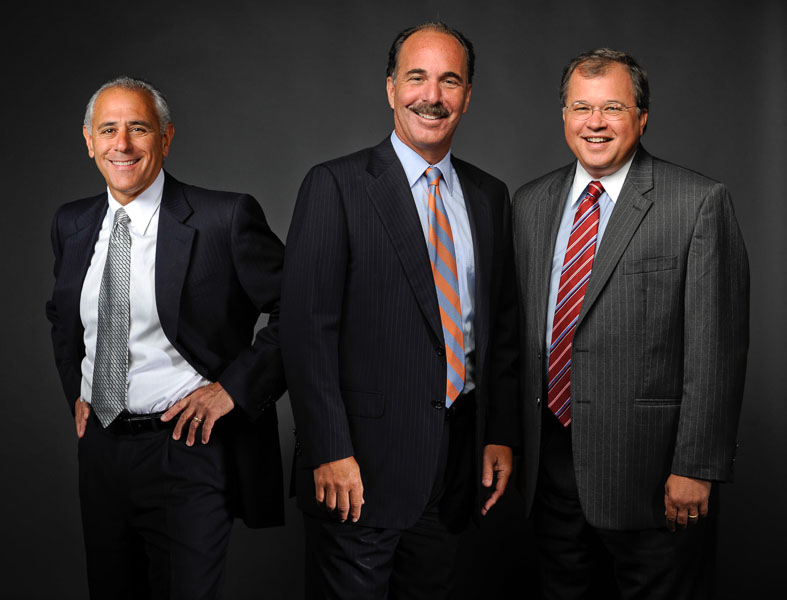
From left to right, our partners: Ronald E. Gluck, Marc L. Breakstone and David W. White. Breakstone, White & Gluck recently received two tier 1 rankings in the U.S. News “Best Law Firms” rankings. Our three partners were recognized this year individually in the annual Best Lawyers rankings in August. Our associate, Reza Breakstone, was also recognized in the Best Lawyers: Ones to Watch list.
It is our pleasure to announce that Breakstone, White & Gluck of Boston has received two Tier 1 rankings from the U.S. News – Best Lawyers® 2021 edition of “Best Law Firms.” The firm received a Tier 1 ranking in the specialty of personal injury litigation for plaintiffs in Boston. The firm also received a Tier 1 ranking in medical malpractice law for plaintiffs in Boston.
U.S. News & World Report and Best Lawyers compiles the “Best Law Firms” rankings annually to recognize firms for professional excellence and consistently impressive ratings from clients and peers. A firm must have at least one attorney recognized on The Best Lawyers of America list to be eligible for a “Best Law Firms” ranking. All three of our partners – Marc L. Breakstone, David W. White and Ronald E. Gluck – have been individually recognized, including by the 26th edition of The Best Lawyers in America, which was announced in August 2020.
Firms are recognized based on a rigorous evaluation process, including a collection of client and lawyer evaluations, peer reviews from leading attorneys in a field and review of additional information law firms submit may submit for consideration. Awards are given in 75 national practice areas and 127 metropolitan practice areas.
Recognized firms received a tier 1, tier 2 or tier 3 rating. Breakstone, White & Gluck received Tier 1 rankings in personal injury and medical malpractice and these reflect the highest level of respect a firm can earn among other leading leaders and clients in local communities and practice areas.
Attorney Marc L. Breakstone was recognized by Best Lawyers in August in medical malpractice law – plaintiffs, personal injury litigation – plaintiffs and professional malpractice law – plaintiffs.
Attorney David W. White was recognized by Best Lawyers in personal injury – personal injury litigation – plaintiffs, insurance law and medical malpractice law – plaintiffs.
Attorney Ronald E. Gluck was recognized by Best Lawyers in personal injury litigation – plaintiffs.
Attorney Reza Breakstone was recognized by Best Lawyers in America: Ones to Watch (2021) in medical malpractice law – plaintiffs.
More Recognition for Breakstone, White & Gluck
Breakstone, White & Gluck of Boston offers our clients more than 100 years combined experience in the handling of personal injury and medical malpractice cases. We are proud of our consistently strong results and to have achieved a high level of satisfaction from our clients. We invite you to read some of our client reviews or our case results in the areas of personal injury, medical malpractice and car accidents.
Breakstone, White & Gluck been consistently recognized for our attorneys’ results for clients. Best Lawyers and Best Law Firms have mentioned our firm name in at least one practice area each year since 2011.
In addition, for the 17th year, our lawyers were recently selected to the annual Massachusetts Super Lawyers lists, as top rated Boston personal injury and medical malpractice lawyers. Breakstone, White & Gluck also earned a spot on the Top 100 Massachusetts Super Lawyers list and has received past rankings on Top 100 New England Super Lawyers. The Top 100 lists are notable because they draw from attorneys across all practice areas, not just our firm’s specialties.
Our attorneys also maintain an AV rating – the highest rating for legal abilities and professional standards from Martindale-Hubbell.
Free Legal Consultation – Boston Personal Injury Lawyers
If you have been injured by someone else’s negligence or wrongdoing, learn your legal rights. For a free legal consultation, contact our attorneys at 800-379-1244 or 617-723-7676. You can also use our contact form.
National Teen Driver Safety Week Offers Safety Reminders for Massachusetts Families
 Motor vehicle crashes are the leading cause of death for teens. Each year, National Teen Driver Safety Week highlights safety insights for families and teens. This year, the event runs from October 18-24th. We encourage you to follow the National Highway Traffic Safety Administration and Teen Driver Source for more information. Teen Driver Source is operated by the Center for Injury Research and Prevention at Children’s Hospital of Philadephia, which offers Facebook and Twitter feeds.
Motor vehicle crashes are the leading cause of death for teens. Each year, National Teen Driver Safety Week highlights safety insights for families and teens. This year, the event runs from October 18-24th. We encourage you to follow the National Highway Traffic Safety Administration and Teen Driver Source for more information. Teen Driver Source is operated by the Center for Injury Research and Prevention at Children’s Hospital of Philadephia, which offers Facebook and Twitter feeds.
According to the National Highway Traffic Safety Administration, the greatest dangers teen drivers face are: alcohol consumption, inconsistent or no seat belt use, distracted driving, speeding and driving with passengers in the vehicle. This year, COVID-19 has introduced a new concern. Teens are driving far less and risk losing core skills. This is where National Teen Driver Safety Week comes in as an important resource this year.
Driving Safety Contract. If you follow Teen Driver Safety Week, you may learn about teen driver contracts. You can also print this parent-teen driving contract from the Centers for Disease Control and Prevention (CDC). Make your own edits and ask your teen to sign as a condition for using your vehicle. Give your teen a copy of the document to file away and review. This is a good way to lay out expectations for your teens and what will happen if they violate the agreement.
Make Sure Teens Get Enough Driving Time. If teens are not driving as much during COVID-19, they risk falling behind on fundamental skills. To prevent this, encourage your teen to drive regularly. When you go out with your teen, split the driving responsibilities so you know they are logging at least some time behind the wheel and you can monitor their progress.
Hold back judgment and sharp comments if you see some of their skills have regressed. This may happen. Just help them get practice in where they need it. Take advantage of empty parking lots and slower times of the week. You can get them back on track.
Drive Around Town With Your Teen. When you can, walk and drive around your community with your teen, including during the morning and afternoon commutes. This gives your teen a preview of what may come when they pull out of the driveway alone. You may see more pedestrians and cyclists in areas. You may see parking changes and restaurants offering sidewalk service. Share observation with your teens and try to make helpful suggestions to help them drive safely and avoid car accidents.
Stress the Importance of Slowing Down. Speed is a factor in nearly 30 percent of all fatal crashes involving teen drivers, according to AAA. Teens often have a heavy foot on the gas pedal and this only changes as they gain experience. For now, if teens can simply slow down, they can significantly reduce their risk of a collision.
Start by helping your teen recognize speed limits because they are not always posted right in front of them. While they should have learned this in driver’s ed, new drivers can use a reminder from time to time. Massachusetts sets a default speed limit of 30 mph in thickly settled and business areas, unless posted otherwise or an individual community has opted to lower the speed to 25 mph. School zones and work zones are 20 mph.
Encourage your teen to travel at or below the speed limit, especially in residential neighborhoods. By doing so, they reduce their risk of causing a car accident due to inexperience in the first few months or year of driving. They reduce their chance of causing themselves or someone else serious injuries and all the emotions and stress.
Reduce Distractions. Slowing down is the most effective tool for safe driving. It’s also important to reduce distractions. This means setting aside cell phones and limiting conversation with passengers in the vehicle. Sure, your teen is going to engage in discussion with others in the car. But try to make conversation lighter and focus more on observation, such as, “I see cars backing up at the traffic light ahead” or “there is an ambulance coming.” Save heavy discussion for before or after the drive.
Safety Steps Near Pedestrians and Cyclists. Teens may struggle to drive near pedestrians and cyclists. Every few weeks, drive through school zones and busy areas with your teen again, just as a refresher. Show them how you stop at crosswalks for pedestrians and leave room in anticipation of pedestrians. Instead of chatting at traffic lights, use this time to show your teen how to check for cyclists. More and more people have been cycling over the past decade in Massachusetts. This likely increased during COVID-19 and will likely continue. The reality is cars are not the only vehicle on the roads. Cyclists have the right to travel in the road too. You can really help your teen by teaching them to look for cyclists.
Buckling Up. Teens and young adults have the lowest rates of seat belt use, according to the CDC. Almost half of all drivers age 15-20 who died in car crashes were not wearing seatbelts in 2017, according to the CDC. During COVID-19, your teen may go long periods of time without driving or traveling in the car. Remind your teen – and all your family members – to always buckle up.
Boston and Cambridge Car Accident Lawyers – Breakstone, White & Gluck
At Breakstone, White & Gluck, our Boston car accident lawyers have over 100 years combined experience representing those injured by negligent driving. If you have been injured in a car accident and someone else was responsible, learn your legal rights. For a free legal consultation, contact our attorneys at 800-379-1244 or 617-723-7676 or use our contact form.
After Fatal Harvard Square Bicycle Accident, Cambridge Expands and Accelerates Plans for Protected Bike Lane Network
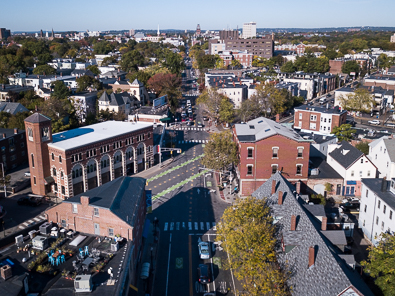
View from Inman Square, Cambridge, once ranked the top bike crash site in Massachusetts, according to MassDOT crash data. Photo: 2017, after installation of new bike lanes.
With strong encouragement from local cyclists, the Cambridge City Council voted to expand and update the Cambridge Cycling Safety Ordinance this week. The council approved the original ordinance last year, drawing national attention with an ambitious commitment to build 20 miles of protected bike lanes.
But cyclists felt there was more work to do. They recently asked the Cambridge City Council to prioritize areas for protected bike lane development, add new roads and establish a deadline for improvements.
- The Cambridge City Council approved a May 1, 2026 deadline for building out Cambridge’s network of protected bike lanes (now 22.6 miles), using either permanent construction or quick-build approaches (Source: Cambridge Bicycle Safety announcement dated October 6, 2020).
- Protected bike lanes will also be added in more areas, including Broadway, between Harvard University and Kendall Square, and Garden Street, according to according to StreetsBlog Mass.
- City councilors also voted to prioritize bike lane development in the area north of Harvard Square, directing city staff to develop a detailed plan by May 2021. Hampshire and Cambridge streets, near Inman Square, will also now move up on the work list (Source: StreetsBlog Mass).
The vote comes several weeks after a cyclist was killed in Harvard Square. In August, a large tractor-trailer struck and killed the male cyclist on Massachusetts Avenue, near Brattle Street. Just a year ago, in September 2019, another bicycle accident resulted in a female cyclist’s death in the area. A devastated family member later wrote a guest column in a local newspaper, urging the city to make safety improvements in Harvard Square.
The City of Cambridge has been studying traffic in congested Harvard Square. After the cyclist’s death in August, a city official stated Cambridge will add a separated bike lane and reduce travel lanes on Massachusetts Avenue, between the Harvard Square Kiosk and Harvard Square (Source: The Boston Herald, August 26, 2020).
Harvard Square is known for historic buildings and iconic shops, such as The Coop, the Harvard University bookstore. Adjacent to Harvard Yard and Harvard University, the square is located at the intersection of Massachusetts Avenue, Brattle Street and John F. Kennedy Street. The MBTA red line stops there and pedestrians and cyclists are in close proximity to motor vehicle traffic, buses and trucks.
Other Cambridge Bicycle Accidents
The Cambridge Bicycle Safety, a volunteer group, has led the effort for expanding protected bike lanes across the city. Its announcement noted this was the first mandatory timeline for building a bike lane network in the United States.
Safety is a leading concern for cyclists in Cambridge. Between residents and commuters, Cambridge has a high number of cyclists. When cyclists have been injured or killed in traffic accidents, many people have felt the impact. There has been a strong response in each case.
In June 2016, a 27-year-old cyclist was tragically hit and killed in a bicycle crash in Inman Square. The woman was struck by a Jeep Cherokee’s open door, then pushed into the travel lane, where she was ultimately struck by a moving dump truck, according to Wicked Local Cambridge. She was pronounced dead a short time later at Massachusetts General Hospital.
Then, in October 2016, a cyclist was fatally injured in Porter Square. The cyclist was struck by a tractor-trailer and a sedan during a morning ride. He was pronounced dead at the scene.
After these crashes, a Cambridge resident campaigned to encourage drivers to use the Dutch Reach method before exiting their vehicles. This method encourages drivers to take a full look at the road from their seat, so they do not risk “dooring” a cyclist.
As a result of his campaign, the state of Massachusetts added instruction on the Dutch Reach method to the state driver’s manual to educate drivers.
Free Legal Consultation – Boston and Cambridge Bicycle Accident Lawyers
Breakstone, White & Gluck is a Boston law firm which specializes in the representation of cyclists who have been injured by negligent drivers. Our attorneys offer more than 100 years combined experience handling all types of bicycle accidents, including truck crashes injuring cyclists, intersection bike accidents, right hook crashes and dooring. We help cyclists obtain compensation for recovery, including for medical care, lost wages and pain and suffering.
But our attorneys do more than represent cyclists. We are committed to improving safety for cyclists in the Boston area. We have long supported local cyclist clubs. And through our Project KidSafe campaign, we have donated 30,000 bicycle helmets to children across Massachusetts, including in partnership with the Cambridge Police Department. The League of American Bicyclists has honored us as a Silver-Level Bicycle Friendly Business.
If you have been injured, learn your legal rights. For a free legal consultation, call our Boston bicycle accident lawyers at 800-379-1244 or 617-723-7676. You can also use our contact form.
Safety Reminders for College Students and Others Renting Apartments in Boston

College students and other renters have the right to live in safe apartments.
September has arrived. In Boston, college students returned a few weeks ago and the focus has been preventing the spread of COVID-19. But apartment safety is another important topic – for college students as well as other renters.
If you rent an apartment, your safety is paramount, and that has not changed during COVID-19. We encourage you to inspect properties before signing leases and moving in. Speak to your landlord, your college or your family if you find yourself in unsafe conditions.
At Breakstone, White & Gluck, our personal injury lawyers are experienced in cases involving landlord negligence resulting in the injury of our clients. In Allston and other parts of Boston, we have represented college students and other renters who have been very seriously injured in falls and fires. These are devastating stories, more so because landlords neglected their responsibilities to maintain safe premises.
During COVID-19, there is a very real risk that landlords may fall behind or neglect to maintain their properties. If you rent and see a hazard, be prepared to speak up so no one is injured.
We share a few safety tips and resources:
Notify Your Landlord of Hazards Promptly
If you see a hazard, notify your landlord or the property owner. We know it can be overwhelming to be 19 or 20 years old, living on your own for the first time and stressed about approaching a landlord. Honestly, this is never easy – even for renters with a few years of experience. But if you need help, you should reach out to your parents, family members or someone else you trust. Your safety – and the safety of your roommates and others in the building – is the priority.
When you contact your landlord, do so in writing. Describe what appears unsafe and email a photo. Ask them to come inspect the problem. If you do not make any progress, call your college or the City of Boston’s Inspectional Services Department.
Thoroughly Inspect Your Apartment Regularly
If you recently signed a lease, you likely inspected the apartment first. Your apartment may be in good condition and look well-maintained. But things can break. Safety hazards can emerge with use. Monitor conditions throughout the year so no one is injured.
If you are in the middle of a lease or have rented through COVID-19, you should also conduct a thorough inspection with a new eye.
You may see hazards you have learned to live with. A few examples include broken handles, railings and staircases. Collapsed wood on porches or decks, which will eventually rot away. Floors which are so worn you have already slipped on them. We will stop here. You cannot live with these things. Doing so could result in an accident – and will likely result in you losing part of your security deposit down the road. Alert your landlord now.
Never Forget the First Step of Safety: Smoke Alarms
Smoke alarms are the most basic tools you have to protect yourself. Make sure your apartment has working smoke alarms and carbon monoxide detectors at all times. Regularly replace the batteries and test them.
Check Out These Websites and Resources for Tenants
Know Your Rights When You Rent in Boston
City of Boston Inspectional Services
Attorney General’s Guide to Landlord and Tenant Rights
A Warning About Fake Apartment Listing Scams, WCVB-TV Boston
Injured by a Landlord’s Negligence in Massachusetts? – Free Legal Consultation
With more than 100 years combined experience, Breakstone, White & Gluck and our Boston personal injury lawyers fight for the rights of those injured by negligence and wrongdoing in premises liability cases. Our attorneys have been consistently recognized among the best lawyers in Massachusetts and New England by Super Lawyers and Best Lawyers in America. We provide experienced representation to those injured by the negligence of property owners and landlords, including in falls, porch collapses, fires and elevator accidents.
If you have been injured by unsafe conditions in an apartment, learn your legal rights. Call Breakstone, White & Gluck at 800-379-1244 or 617-723-7676 or use our contact form.
Breakstone, White & Gluck Gives Bike Helmets in Lowell This Summer
- The Bike Connector donated refurbished bikes in Lowell. Breakstone, White & Gluck supported the donations by giving each cyclist a free helmet from our Project KidSafe campaign.
- The Bike Connector donated refurbished bikes in Lowell. Breakstone, White & Gluck supported the donations by giving each cyclist a free helmet from our Project KidSafe campaign.
- The Bike Connector donated refurbished bikes in Lowell. Breakstone, White & Gluck supported the donations by giving each cyclist a free helmet from our Project KidSafe campaign.
We are pleased to share an update from Lowell, where our partner, The Bike Connector, had a strong start-up year getting bikes and safety materials to students, despite the many challenges of COVID-19. We hope interest and momentum is building around The Bike Connector’s work.
As of mid-August, The Bike Connector had distributed 93 new refurbished bikes to local students (which is a big accomplishment, even in non-COVID times). Breakstone, White & Gluck was pleased to support the organization’s bike safety initiative. Our attorneys gave each student a new bicycle helmet, as part of our Project KidSafe campaign.
The Bike Connector had to relocate from its classroom due to COVID-19. It ended up working out of a storage container at Career Academy in Lowell Highlands, which is part of the Lowell Public School system. But the organization made the set-up work. They even enjoyed a few benefits, such as being able to work with students outside, having bikes and safety gear nearby and shade from the hot sun.
The organization identified youth who needed bikes by partnering with the Lowell Public Schools and other educational, non-profit and social services agencies across the city. These organizations included Brigid’s Crossing; Merrimack Valley Catholic Charities and the Cambodian Mutual Assistance Association. Other partners: the Boys and Girls Club of Greater Lowell; UMass Lowell Freewheelers; Elevate New England; and New American Center.
If you were in Lowell this summer, you may have seen The Bike Connector giving away refurbished bikes and helmets. You may have seen the students and their families having a lot of fun as they received new bikes. If you looked closer, the excitement extended beyond students and their families. Word of events spread quickly in neighborhoods.
Behind the scenes, what you didn’t see was The Bike Connector also offered a four-week online summer bike academy to incoming freshmen at Lowell High School this summer. This program introduced students to bike safety, bike maintenance, the rules of the road, Lowell geography and urban planning. Each student who participated earned a bike, helmet and light. We hope this course proves to be a guide as students return to school and want to travel safely on bikes.
About Breakstone, White & Gluck – Boston Personal Injury Lawyers
Breakstone, White & Gluck is a Boston personal injury law firm which represents clients who have been seriously injured by negligence or wrongdoing. In 2013, our lawyers founded our Project KidSafe campaign, with a goal of encouraging children to wear helmets every time they ride. By wearing a properly-fitted helmet, children and other cyclists can protect against head injuries. In Massachusetts, children age 16 and younger are required to wear helmets. But children need more. They need a strong encouragement from their families and others in the community. If you are a parent, we encourage you to wear a helmet along with your child.
Learn more about Breakstone, White & Gluck and our Project KidSafe campaign.
Drivers Making Unsafe Turns Cause Many Pedestrian Accidents in Intersections
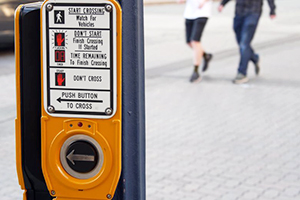 Many of us will head back to work and school in September and October, at least part time. Due to COVID-19 and our new schedules, some of us may choose to walk for the first time, instead of relying on public transportation. If you walk, use caution – especially in intersections.
Many of us will head back to work and school in September and October, at least part time. Due to COVID-19 and our new schedules, some of us may choose to walk for the first time, instead of relying on public transportation. If you walk, use caution – especially in intersections.
Nearly 20 percent of all traffic accidents result in pedestrian fatalities, according to the National Safety Council. An estimated 40 percent of all pedestrian accidents occur in intersections, according to the Federal Highway Administration (FHWA).
A few facts from a FHWA study on pedestrian accidents in intersections:
Drivers are making unsafe turns. According to this study, one in five pedestrian accidents at signalized intersections occurred when vehicles made unsafe turns.
Left-turning vehicles cause more pedestrian accidents at intersections. Pedestrians at signalized intersections are more likely to be hit by a left-turning vehicle. Researchers found 60 percent of drivers who hit pedestrians turned left, while 40 percent turned right. The FHWA researchers noted a driver’s view may be impeded more when turning left.
Pedestrians walk safer in groups. Researchers concluded that pedestrians walking in groups were less likely to be hit by left-turning vehicles than those walking alone. Again, this may be due to drivers being able to see pedestrians better. There was a notable difference – three out of four pedestrians hit by left-turning vehicles were walking alone.
Take Steps to Protect Yourself at Intersections
If you are a pedestrian, cars and trucks have the advantage in size. You have to assume drivers won’t always be able to see you as traffic moves. You also have to be prepared for negligent operators, who are speeding or allow themselves to become distracted.
You can take steps to protect yourself though. Purchasing a neon vest is a good place to start. If a driver can see you, they may be more likely to slow down. Also take advantage of technology. Use Google Maps or another traffic app to plan your walking route.
At intersections, look for crosswalks with pedestrian traffic signals. Wait for the walk signals before crossing. Drivers have a responsibility to yield the right of way to pedestrians in all marked crosswalks in Massachusetts. Yet pedestrian signals are more visible and can make a big difference in protecting pedestrians.
Drivers also have a responsibility to check for pedestrians (and cyclists) before turning at intersections. Studies have found that drivers are not looking enough – which is frustrating because more cars now have rearview mirror cameras to help them. Drivers need to be scanning the intersection more in front and behind for pedestrians and cyclists. This is critical in Boston, Cambridge and other cities because commercial truck drivers travel much higher up than pedestrians and cyclists and often, there is no eye contact. But truck drivers are not the only risk. Pedestrians have to be aware of all vehicles – SUVs, cars, buses. These drivers should also be paying attention to you.
Breakstone, White & Gluck – Boston and Cambridge Pedestrian Accident Lawyers
At Breakstone, White & Gluck, our Boston personal injury lawyers fight for justice for those who have been seriously injured by negligence or wrongdoing. With more than 100 years combined experience, our attorneys specialize in the representation of those injured in pedestrian accidents and bicycle crashes in Massachusetts. For a free legal consultation, call our attorneys today at 800-379-1244 or 617-723-7676 or use our contact form.


